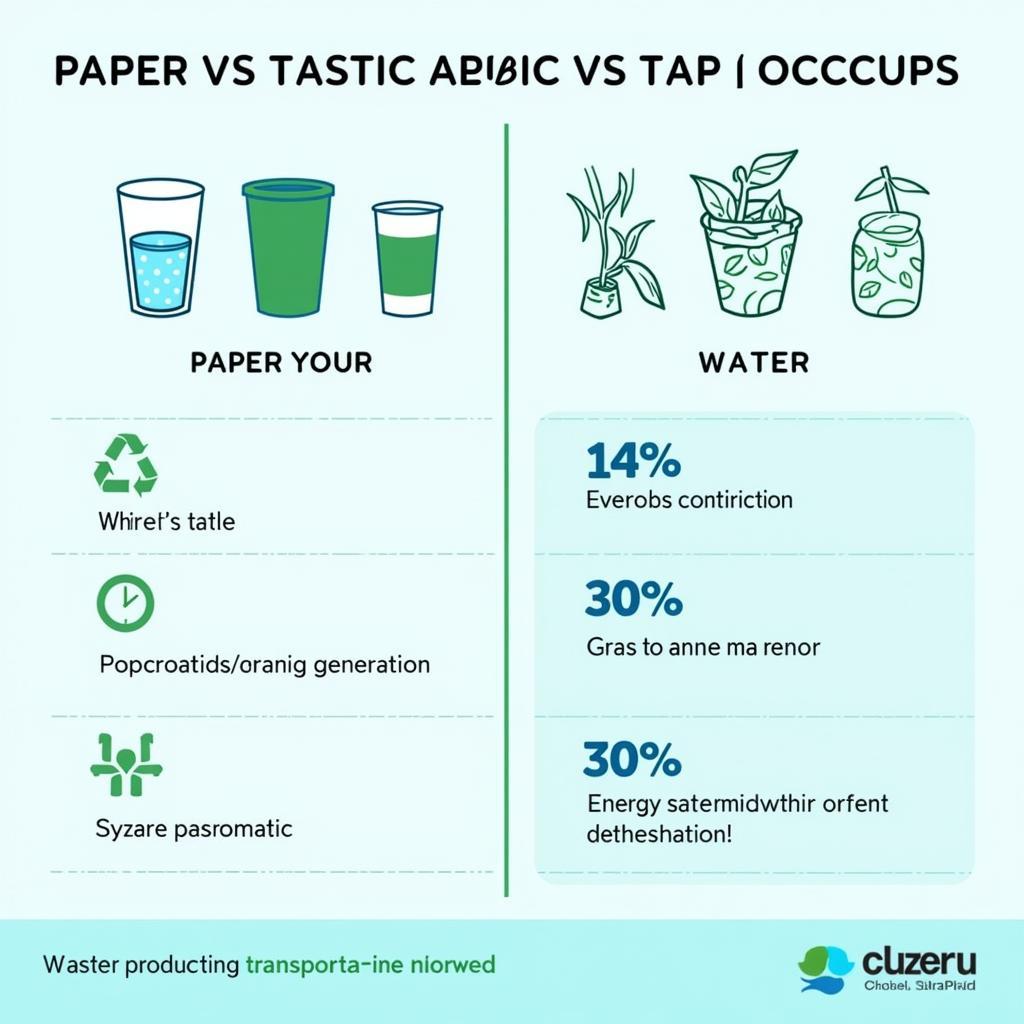Choosing between paper and plastic cups might seem trivial, but it’s a decision with significant environmental and practical implications. This article delves into the paper vs plastic cups debate, exploring the pros and cons of each to help you make an informed choice. small paper cups are becoming increasingly popular, but are they really the better option?
Breaking Down the Paper vs Plastic Cup Dilemma
Disposable cups are ubiquitous, used everywhere from bustling cafes to casual backyard barbecues. But their convenience comes at a cost. Both paper and plastic cups contribute to environmental problems, albeit in different ways. Understanding these differences is crucial to making a responsible choice.
Plastic cups are often made from petroleum-based plastics, which are non-renewable and contribute to pollution. While they are durable and reusable in some cases, they often end up in landfills where they can take hundreds of years to decompose.
Paper cups, on the other hand, are generally perceived as more eco-friendly. They are often made from renewable resources like trees and are biodegradable. However, the production of paper cups requires significant resources like water and energy. Additionally, many paper cups are lined with a thin layer of plastic to prevent leakage, which complicates the recycling process.
Navigating the Environmental Impact of Paper vs Plastic Cups
The environmental impact of paper vs plastic cups isn’t a simple equation. Factors like manufacturing processes, transportation, and end-of-life management all play a role. For instance, while paper is biodegradable, the process of turning trees into cups requires substantial energy and water. Furthermore, if paper cups end up in landfills, they may not decompose properly due to the lack of oxygen.
Plastic’s durability, while seemingly a plus, becomes a problem when it comes to waste management. Plastic cups can persist in the environment for centuries, contributing to pollution and harming wildlife. Although some plastics are recyclable, the reality is that a significant portion still ends up in landfills or as litter.
 Environmental Impact of Paper vs Plastic Cups: A Comparative Analysis
Environmental Impact of Paper vs Plastic Cups: A Comparative Analysis
Are Paper Cups Really Better than Plastic? Examining the Facts
The question of whether environmentally friendly cups made of paper are truly superior to plastic ones is complex. While paper cups are often marketed as the greener choice, the reality is more nuanced. The manufacturing process for paper cups can be quite resource-intensive, requiring large amounts of water and energy.
Consider the plastic lining often found in paper cups. This lining makes them difficult to recycle, negating some of the perceived environmental benefits. This is why it’s crucial to choose unlined paper cups or look for compostable options.
“The key to making an environmentally sound choice lies in understanding the entire lifecycle of the product,” says Dr. Emily Carter, an environmental scientist specializing in sustainable packaging. “From raw material sourcing to disposal, each stage has an impact.”
Exploring Alternatives: Beyond Paper and Plastic
The good news is that innovative alternatives to both paper and plastic cups are emerging. bamboo disposable cups] are gaining popularity as a sustainable and stylish option. These cups are made from fast-growing bamboo, a renewable resource.
Another alternative is to simply bring your own reusable cup. While this requires a bit more planning, it’s arguably the most environmentally friendly option. Many cafes now offer discounts to customers who bring their own cups, making it both an eco-conscious and economical choice.
Making the Right Choice: Finding the Best Cup for Your Needs
Ultimately, the best cup for you depends on your specific needs and priorities. If convenience is paramount and you’re looking for a low paper cups price, then plastic or conventional paper cups might be suitable. However, if environmental sustainability is your primary concern, exploring alternatives like 5 oz ice cream cups made from bamboo or switching to a reusable cup is highly recommended.
“Consumers have the power to drive change through their purchasing decisions,” notes sustainability consultant, David Miller. “By choosing eco-friendly options, we can encourage businesses to adopt more sustainable practices.”
In conclusion, the paper vs plastic cups debate is multifaceted. While paper cups might seem like the obvious eco-friendly choice, understanding the entire production and disposal process is crucial. By considering factors like resource consumption, recyclability, and biodegradability, you can make an informed decision that aligns with your values.
FAQ:
- Are paper cups easier to recycle than plastic cups?
- What are the environmental impacts of producing paper cups?
- How long does it take for a plastic cup to decompose?
- Are there biodegradable plastic cup options available?
- What are the benefits of using reusable cups?
- Are bamboo cups a sustainable alternative?
- Where can I purchase eco-friendly cups?
Need help? Contact us at Phone Number: 0372999996, Email: bong.da@gmail.com or visit our address: 236 Cầu Giấy, Hà Nội. We have a 24/7 customer service team.
